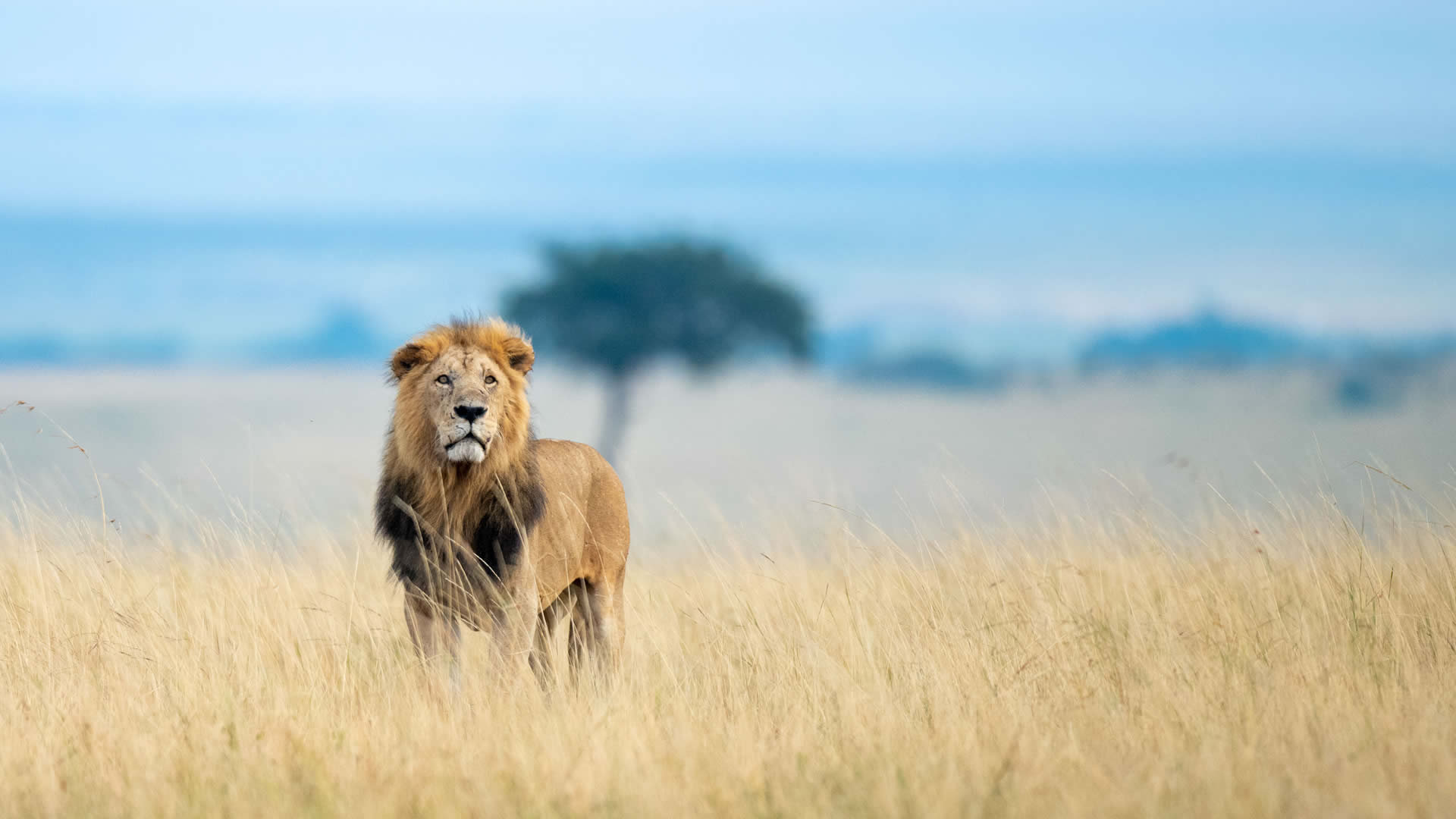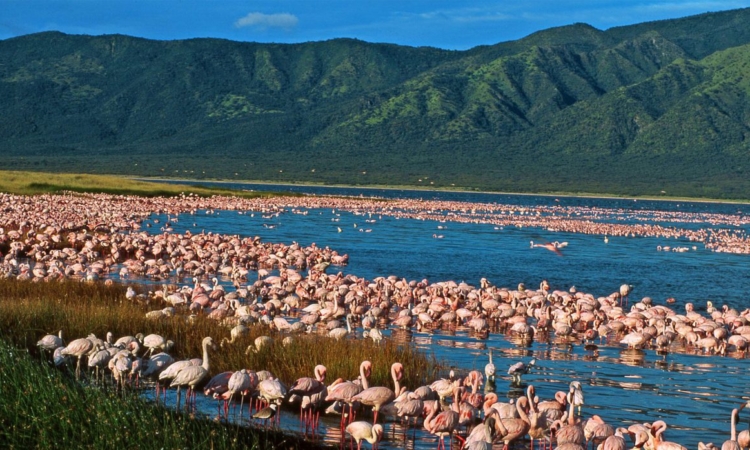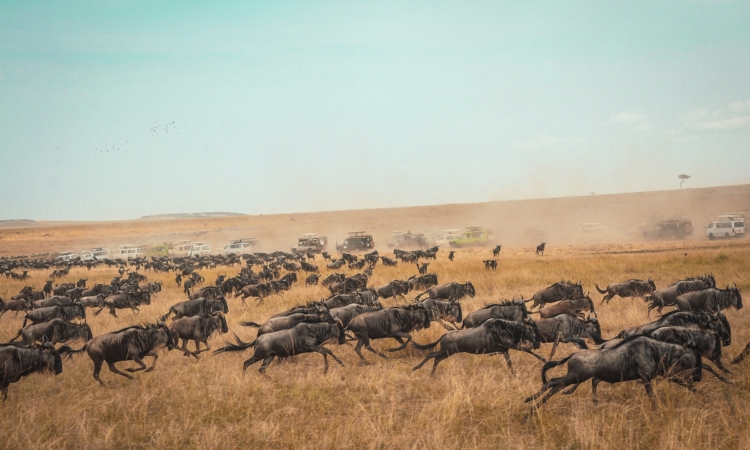The Masai Mara national reserve is located in Kenya renown for the great wildebeest migration that happens annually between the reserve and Serengeti national park in Tanzania. The reserve derives its name Masai from the local Masai people who live around the reserve while the word Mara is still a local Masai word translated to mean ” dotted”.
This reserve is one of the most visited tourism destinations in Africa. The reserve covers an area of 1510 kilometers squared characterized by savannah grasslands, rugged landscapes, diverse wildlife part of the Mara -Serengeti Ecosystem. This reserve was first gazetted as a wildlife sanctuary in 1961 and later upgraded to a national reserve in 1974
Wildebeests Migration
The great wildebeests migration has been considered as the most spectacular wildlife migration on earth by many. The migration occurs every year when millions of wildebeests, thousands of other antelopes and hundreds of predators cross from Serengeti national park on Tanzania to Masai Mara game reserve in Kenya. The wildebeests migration can be observed on a safari vehicle or through a hot air balloon safari.

Wildlife Watching
Exotic wildlife inhabiting Masai Mara game reserve makes it an excellent destination for wildlife viewing. Some of the examples of wildlife found at the reserve include; wildebeests, hyenas, lions, cheetahs, leopards, African bush elephants, African Buffalo, impala, duikers, hartebeests, black and white rhinos, Nile crocodiles, hippos. African wild dogs, bat eared foxes, side stripped jackals, African wolves, honey badgers, aardvark, common elands, zebras, roan antelopes, Masai giraffes and many others. About 95 species of mammals have been recorded in Masai Mara game reserve.
Birding
Masai Mara game reserve is a birder’s paradise with over 450 species of birds recorded. Bird enthusiasts visiting Masai Mara can spot some bird species such as; common ostrich, African darter, Rufus bellied heron, grey heron, black stork, African open bill stork, African spoonbill, white faced whistling duck, red billed teal, secretary bird, Egyptian vulture, crowned eagle, short toed eagle, African harrier hawk, African purple swamp hen, Kori bustard, African Jacana, spotted thick knee, common red shank, emerald spotted wood dove, laughing dove, red chested cuckoo, African palm swift, woodland kingfisher, lilac breasted roller, common scimitar bill, yellow rumped tinker bird, lesser honeyguide, whittle tailed lark, grey rumped swallow and banded Martin to mention a few.
Cultural encounters
The famous Masai people living around Kenya and Tanzania are renowned for their unique way of dressing. The Masai are primarily nomad pastoralists who have preserved their culture since time memorial, you can visit on of their villages around the park and learn more about their day to day lives. Don’t forget to enjoy their traditional music and dance.

Guided nature walks
Guided nature walks at Masai Mara can be done under the guidance of a Ranger guide. Exploring the park on foot is quite thrilling compared to wildlife Watching on a game drive. You get to spot various wildlife species and birds while learning a lot from a knowledgeable guide.
Best time to visit
Masai Mara national reserve can be visited all year round. But for those interested in the wildebeests migration, it’s better to visit from July to October. The best time for overall wildlife Watching is from June to October. And best time for birding is from November to April when migratory birds are present in the park.
Getting there
Tourists can fly in to Jomo Kenyatta international Airport. Then drive to Masai Mara national reserve. Or you can alternatively fly in to the reserve from Jomo Kenyatta international airport. Or Nairobi Wilson airport through a standard chartered flight.
Plan for the great wildebeest migration by contacting our migration safari companies or inquire with us below to plan for your safari tour with us.











